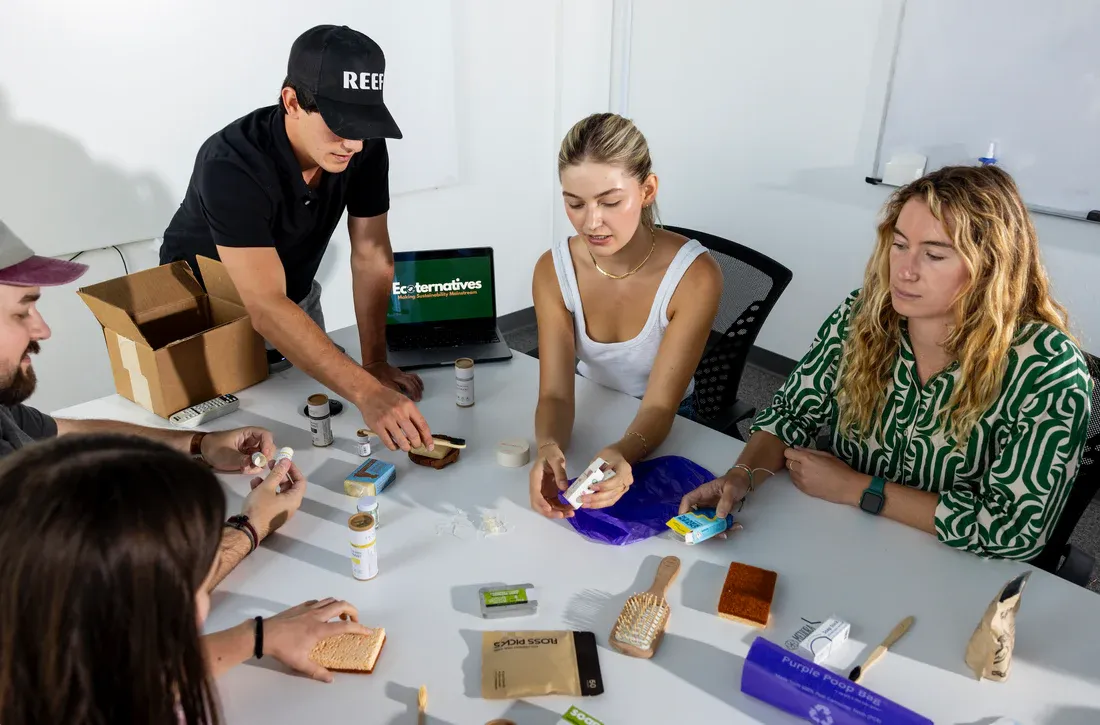Les Meilleurs tests de produits authentiques
Vous connaissez ça ? Partout, on ne trouve que des tests de produits embellis qui ne montrent pas la vérité ? Chez nous, c'est différent ! Nous testons comme vous : dans la vie quotidienne normale, pendant plusieurs semaines et avec beaucoup d'attention aux détails. Ce qui nous rend spéciaux ? C'est simple : Nous payons chaque article nous-mêmes et disons directement ce qu'il en est. Pas de publicité, pas de belles paroles - uniquement des opinions honnêtes. Vous voulez savoir si l'achat en vaut la peine ? Nous vérifions pour vous la qualité, la durabilité et tous les détails importants. Ainsi, vous trouverez certainement ce qu'il vous faut !

Quels produits testons-nous ?
Maison & Cuisine
Indispensables pour votre foyer
Tech & Gadgets
Nouveaux produits technologiques passionnants
Santé & Fitness
Équipements pour un mode de vie sain
Plein air & Loisirs
Tout pour les activités extérieures
Soins corporels
Produits pour votre bien-être
Télétravail
Tout pour travailler depuis chez soi
Comment nous évaluons les produits
Recherche & Sélection
Nous recherchons des produits populaires qui méritent d'être testés
Achat & Vérification
Nous achetons les produits et testons leurs fonctionnalités
Test quotidien
Nous utilisons les produits comme vous le feriez chez vous
Verdict final
Nous attribuons une évaluation équitable
Pourquoi vous pouvez faire confiance à nos tests
De nombreux sites web évaluent les produits après un simple coup d'œil ou ne les testent même pas. Nous faisons les choses différemment - nous prenons le temps de tester chaque produit en profondeur.
Nous achetons tout nous-mêmes
Nous payons chaque produit testé de notre propre poche pour garantir des évaluations indépendantes
Tests approfondis et durables
Nous utilisons chaque produit pendant 4 à 6 semaines pour le connaître en profondeur
Équipe expérimentée
Notre équipe sait ce qui rend un produit vraiment bon
Toujours à jour
Nous mettons à jour nos tests en cas de changements de produits ou quand des problèmes surviennent
Ce qui rend nos tests spéciaux
Nous testons les produits dans la vie réelle, pas seulement sur le papier. Nous sommes convaincus que ce qui compte plus que les caractéristiques du produit, c'est comment il fonctionne chez vous.
Ce à quoi nous prêtons attention
L'efficacité du produit
Nous testons toutes les fonctionnalités et les comparons avec des produits similaires pour déterminer les meilleures performances.
La durabilité
Nous vérifions la qualité de fabrication et la durabilité lors d'une utilisation intensive.
La facilité d'utilisation
Nous veillons à ce que les produits soient faciles à utiliser dès le départ.
Le rapport qualité-prix
Nous examinons le rapport qualité-prix et évaluons si l'achat en vaut la peine.
Nous vous montrons à la fois les forces et les faiblesses de chaque produit. Ainsi, vous pouvez prendre de meilleures décisions lors de vos achats.
Notre équipe
Experts produits
Connaissent tous les produits testés
Équipe technique
Vérifient les détails techniques
Équipe de recherche
Déterminent les attentes des acheteurs
Équipe de test
Testent chaque produit individuellement